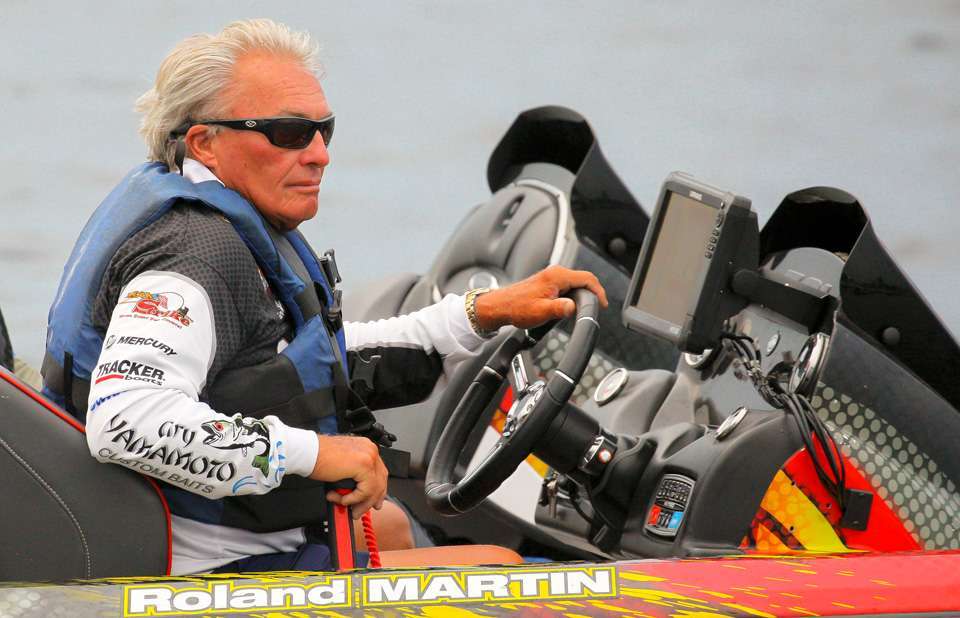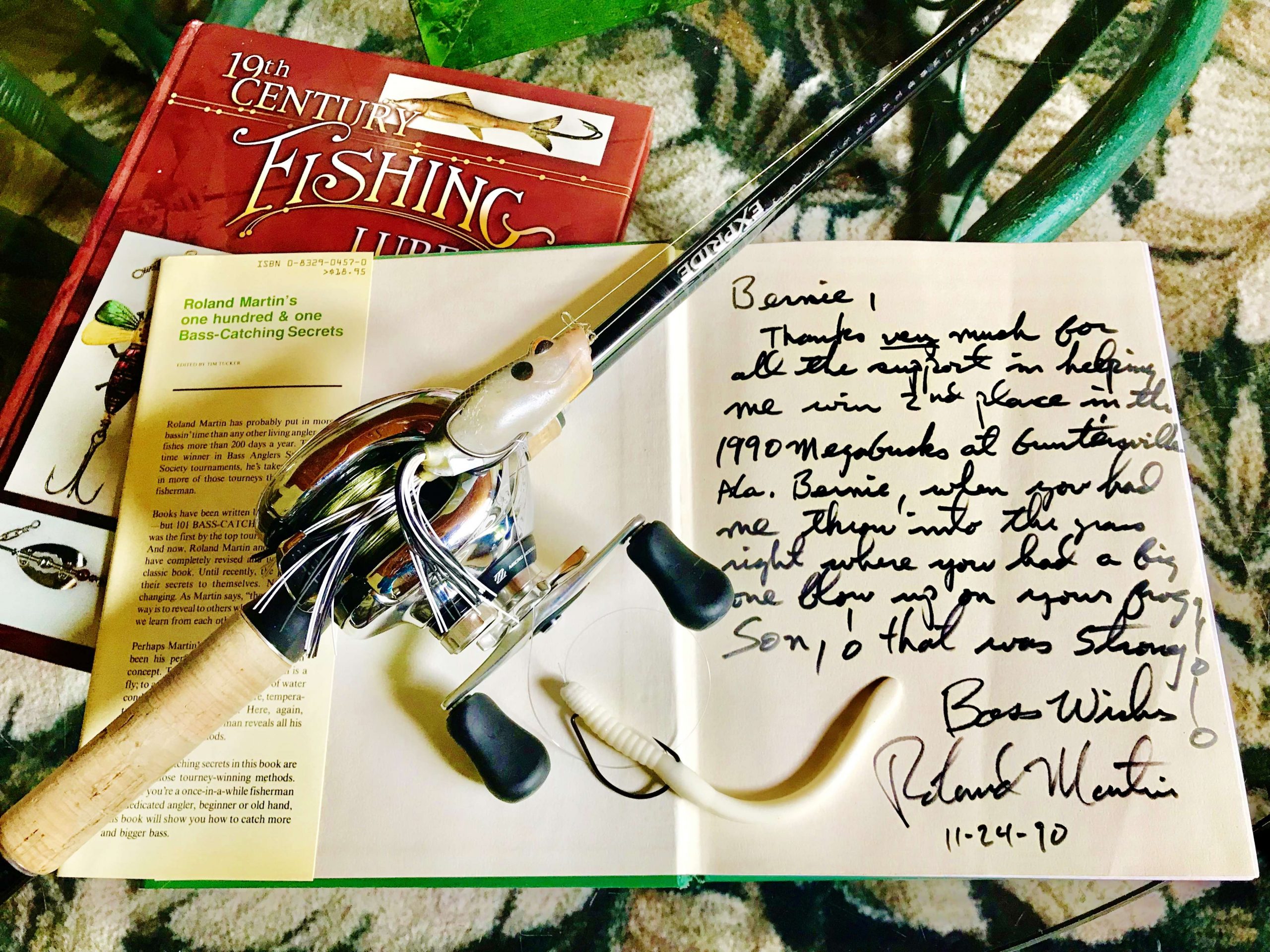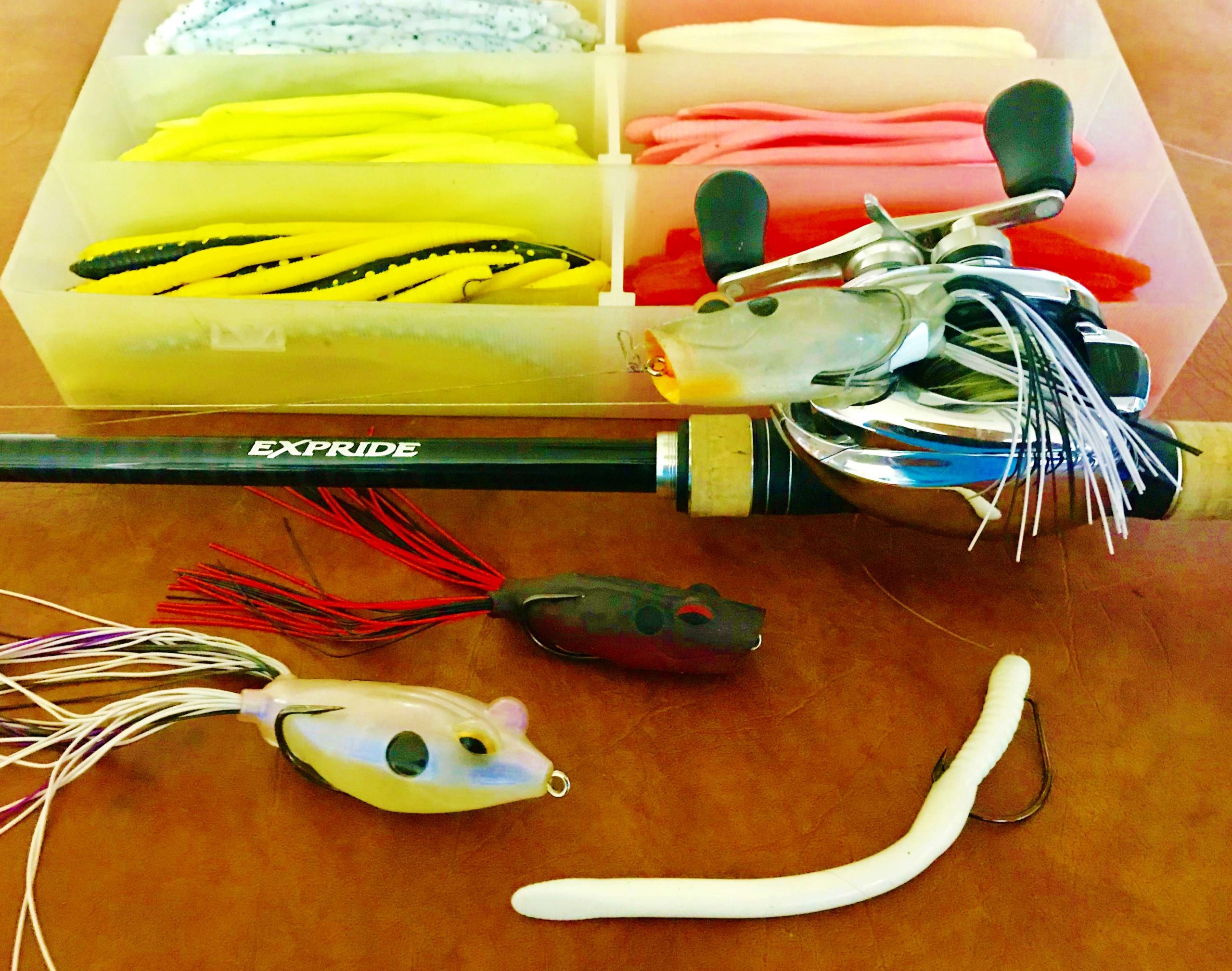
A true icon in the sport, Roland Martin has captured more Bassmaster Angler of the Year (AOY) titles than anyone (9).
In fact, Roland was winning B.A.S.S. tournaments before many of you were born.
At age 79, he is still going strong. And when it comes to fishing, he may have more endurance than any angler on the planet. I know firsthand, because I’ve fished with Roland on many occasions — both in fresh and saltwater.
The man is tireless. But more than that, he’s incredibly talented. And I learned many valuable lessons from Roland during our time on the water.
Fashioning frogs
In 1990, during a B.A.S.S. Megabucks event on Lake Guntersville, I had the good fortune of being paired with Roland. Day 3, after the 50 cut, we were both guaranteed a solid payday. Because Roland was near the top of the standings and on a better grade of fish, I yielded to him. Back then, pros shared the boat together — each having control for half the day.
It was November, and much of the lake was matted over with grass. Flipping and frogging were the most productive techniques.
Fully dialed in, Roland targeted a series of topped-out grassbeds in an area called Alred’s — a large, undulating flat known for holding big bass. Moving from one edge to another along his route, he fished his frog with great patience.
That wasn’t out of the ordinary, but the way he rigged his frog was.
Because he had experienced a number of short strikes in practice, Roland figured out a way to increase his odds by adding a trailing worm as a follow-up lure. Yes, that’s right! A hollow-body frog with a trailing worm. By adding a short trace of heavy line, he Texas-rigged a floating worm as a second offering. And it worked!
On several occasions, I witnessed quality bass short-strike his frog then engulf the worm. It seemed to work best anytime the frog entered a thin spot in the grass. He told me that rig was responsible for numerous catches, some of which were his better fish.
As it turned out, Roland advanced to compete in the top 10 — then on to finish second. Sometime after the tournament, I received a gift in the mail. It was a signed copy of his 101 Bass-Catching Secrets, co-authored by our mutual friend Tim Tucker. The gift was thoughtful, but his inscription inside the cover meant more to me than anything.
It read, “Bernie, Thanks very much for all the support in helping me win 2nd place in the 1990 Megabucks at Guntersville, Ala. When you had me throw into the grass where you had a big blow up on your frog … Son, O’ that was strong!”
Other lessons
On two separate occasions, Roland and I rented houses during practice sessions for the Bassmaster Classic. Back then, the Classic was held in the summertime and B.A.S.S. would give us one week, well in advance, to scout the tournament waters. One event was held on High Rock Lake in North Carolina. The other was on Lay Lake in Alabama.
It was fun and educational. Each night we compared notes — discussing patterns, lure selection, etc. And I learned a lot, especially how he broke down each body of water.
After those practice sessions, we returned to Florida and chased tarpon, snook and redfish. I even shot a couple of TV shows with him. Roland was just as avid and skillful in the brine, and you could tell saltwater fishing was his escape.
One time — before filming a show together — he invited me along on an offshore trip, to wrap up an episode he had been working on. He needed some underwater footage to go with a series of catches from the day before. The target species was permit. What amazed me most about that trip was how skillful Roland was at navigation. He could literally navigate by the stars.

On our way out, I noticed him plotting some coordinates on a map. He was hoping to return to a ripline he had discovered well offshore, where he noticed an abundance of crabs floating in the current. Forced to compensate for tide and lapsed time, he figured what should be their approximate location.
Nearing that location, he said to keep an eye out … we should start seeing crabs.
No sooner did the words register when we noticed a color change indicating the ripline. It carried countless little crabs, scurrying on the surface. We netted a bunch, then headed straight to the fishing grounds, where we caught permit until our hands bled.
It was masterful how he pinpointed the location of the bait — factoring in the tide and current direction — more than 12 hours later.
More salt
On a trip to the Florida Keys, we fished with our friends — former B.A.S.S. pro Chet Douthit and Keys guide Jimmy Dalrymple. This time we were targeting tarpon at night under the Channel 2 Bridge, near Islamorada. After releasing numerous tarpon, Roland hooked into a massive permit — the biggest any of us had ever seen. When we finally got it into the skiff, it was as big as the deck — nearly 4 feet long.
That trip was an all-nighter.
At daybreak, Roland and I went fly-fishing for tarpon. We jumped several. But what was so special about it was that he fished with a reel that he had carved from bar-stock aluminum on his own lathe. Think about that for a second. He made his own fly reel from scratch … and it worked.
With his credentials, Roland could get the best fishing equipment in just a phone call. Yet he wanted the thrill of catching 100-pound fish on something he had crafted himself. To me, that’s a heck of a statement about the man who has earned more AOY titles than any other B.A.S.S. pro.
Follow Bernie Schultz on Facebook or through his website.


